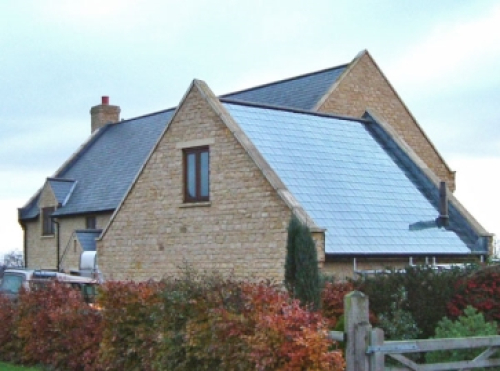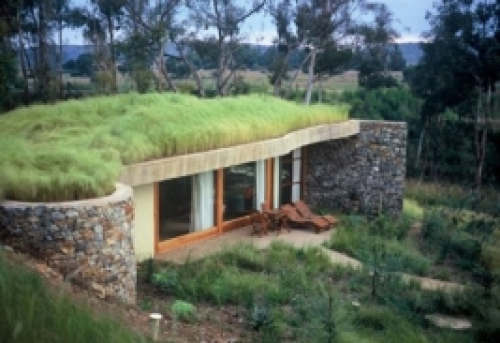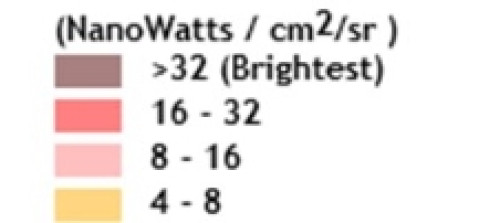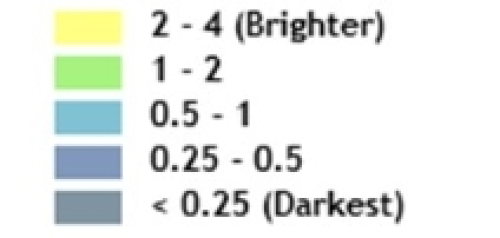Great Tey Neighbourhood Plan 2022-2033 (Regulation 16)
6 ENVIRONMENT
Objective 3: To minimise the environmental impact of development both in terms of carbon emissions and biodiversity
6.1 The Climate Change Act 2008 committed the UK to an 80% reduction in CO2 emissions by 2050. In June 2019, an announcement was made by Government to reduce this further to almost 100% by 2050. This will be a major task that will require everyone to be engaged, from households and communities, to businesses and local and national government.
6.2 In 2016, the residential sector alone accounted for over 16% of the UK's annual greenhouse gas emissions (source: Department for Business, Energy and Industrial Strategy). The total emissions from all building types will therefore be much greater. Standards for ecologically sustainable homes and developments are now optional[7].

Solar panels integrated into the design of a building
6.3 It is vital that new homes and other buildings are built to the highest possible standards and are designed in a way that minimises their carbon footprint. This not only means that they should be exceptionally well insulated, but they must have low water demand (and maximise use of grey water) and maximise renewable sources in the provision of their energy. Policy CC1 of the Colchester Local Plan Section 2 acknowledges that in 2019, Colchester City Council declared a climate emergency and sets out how development needs to contribute towards a low carbon future. Policy DM25 requires development of buildings to incorporate measures to adapt to and mitigate climate change. The Local Plan Section 2 therefore covers these issues in its policies and this is supported by the Neighbourhood Plan. Development in Great Tey is encouraged to go as far as it can to minimise the impact of development on the environment and climate.
6.4 The Local Plan Section 2 also has a number of policies that address the environment and biodiversity. The role of the policies in the Great Tey Neighbourhood Plan are therefore to provide additional local detail regarding how this should be achieved.
Wildlife-friendly development
POLICY GTTEY5: WILDLIFE-FRIENDLY DEVELOPMENT
A. All development proposals should deliver a minimum of 10% net gain in biodiversity in addition to protecting existing habitats and species, including hedgerows and mature trees. Development should take a 'biodiversity-first' approach and should maximise the delivery of biodiversity net gains on site. If on-site delivery is not possible then it must be clearly demonstrated that all reasonable options for on-site provision have been considered prior to off-site provision.
B. The incorporation of design features into new development that encourages local wildlife and biodiversity to thrive will be supported.
C. Development should be designed to retain trees, shrubs and hedgerows of arboricultural, habitat and amenity value on-site and to conserve and enhance connectivity to the wider multifunctional green and blue infrastructure networks.
6.5 Whilst a large proportion of the parish of Great Tey is farmland, it does have a number of woodland areas which are important for wildlife. This includes the ancient Chalkney Wood. Located just to the north of the parish boundary and easily accessible, it is woodland that is designated as a Site of Special Scientific Interest (SSSI) because of its high biological value.
6.6 The design code for Great Tey suggests a number of areas where development can enhance the environment:
- Tree planting, retention and wildflower strips are considered essential to developments that are providing points of interest and natural screening. It is crucial that plants, trees and shrubs that are planted have a known value to wildlife. Invasive species should be avoided unless they have clear biodiversity benefits. Roadside verges should also be planted with wildflowers for bees and butterflies. This is also addressed in Policy GTTEY2.
- Wildlife corridors, habitat corridors or green corridors are areas of habitat connecting wildlife populations that would otherwise be separated by human activity. These corridors should be encouraged to enhance the existing wildlife and facilitate the re-establishment of populations that have been reduced or eliminated. Particular attention should be paid to hedgehogs, which require a 12cm x 12cm hole in the corner of fencing in order to move through.

Example of hedgehog fencing

Example of a green roof
- At the edges of development, green roofs can be used to help a building blend into its surroundings. They can help mitigate the urban heat island effect and contribute to rainwater retention. Green roofs can provide full or partial coverage of vegetation, but their design should follow the design codes as well as some design principles such as:
- They should be incorporated into the initial stages of the design process;
- They should be easy to access and maintain;
- It should be ensured that the design, materials and proportions complement the surrounding landscape;
- Its design should help to integrate the building with the countryside.
6.7 In a rural location such as Great Tey where development typically sits in a rural setting and is relatively low density, there is ample opportunity for good design to maximise biodiversity as part of development. This should be the fundamental principle that informs the first principles of all development.
6.8 There are parts of the parish that are at risk of flooding. Therefore the use of sustainable drainage systems (SuDS) is needed to manage water, reduce flood risk and improve water quality. SuDS should also be seen as an opportunity to enhance biodiversity and ecosystems. Developers need to give consideration to how to make best use of SuDS so that they are seen not only as a drainage solution but for their amenity value, providing a place for residents and others to enjoy and be closer to nature and green infrastructure. Also it is particularly important that they are utilised to address the NPPF requirement for development to provide a net gain for biodiversity. This is addressed by Colchester Local Plan Policy DM24 (Sustainable Urban Drainage Systems) therefore is not addressed by policy in the Neighbourhood Plan. Development should also have regard to the Sustainable Drainage Systems Design Guide for Essex[8].
Light pollution
POLICY GTTEY6: DARK SKIES AND LIGHTING
- Development proposals should respect the dark skies that are characteristic of the Neighbourhood Area.
- Development proposals are required to address light spillage and eliminate all unnecessary forms of artificial outdoor lighting. Other than householder development, development proposals are required to demonstrate that they meet or exceed the Institute of Lighting Professionals[9] guidance and other relevant standards or guidance for lighting
- Building design that results in increased light spill from internal lighting needs to be avoided, unless suitable mitigation measures are implemented.
- Development proposals which incorporate highway lighting will only be supported if required by the Highways Authority for reasons of road safety.
6.9 As a rural community, Great Tey has relatively dark skies and it is a notable feature of the village that it does not have street lighting. CPRE's 'dark skies' map of the UK shows the darkness of the skies across the Neighbourhood Area. As Figure 6.1 shows, the parish is generally dark but there is brighter in and around the village and the main routes in from the A120 to the south. It is important that light pollution does not encroach further or reduce the darkness of the skies in and around Great Tey village.
6.10 Minimising light pollution is also important for bat activity. Lighting should be as low as permitted by guidelines and if the light is not essential the area should not be lit in order to encourage bat activity. Where lighting is needed there should be periods of time when the lights are switched off to provide some dark periods. Roads or trackways located in areas important for foraging bats should not be lit before a stretch totalling at least 10 metres either side of the bat commuting route. This is to avoid isolation of bat colonies which typically roost in older trees and/or buildings.
Figure 6.1: Dark skies in Great Tey



Source: CPRE: England's Light Pollution and Dark Skies (https://www.nightblight.cpre.org.uk/maps/)
Recreational Disturbance Avoidance and Mitigation Strategy
6.11 The Essex Coast Recreational Disturbance Avoidance and Mitigation Strategy (RAMS) applies to the Neighbourhood Plan area. Policy ENV1, particularly Part B, of the Colchester Local Plan Section 2 applies. Attention is drawn to the development plan requirements which indicate a need for residential development within the zone of influence of habitats sites to make a financial contribution towards mitigation measures, as detailed in the Essex Coast RAMS 2018-2038, and adopted Supplementary Planning Document, to avoid the adverse in-combination effects of increased recreational disturbance to the Essex coast habitats sites.
[7] The Code for Sustainable Homes was withdrawn by the Government in 2015 and this has been replaced by national technical standards, which include optional Building Regulations standards regarding water and access as well as a national space standard (this is in addition to the existing mandatory Building Regulations).
[8] Essex County Council (2020) Sustainable Drainage Systems Design Guide
[9] CIE 150:2003 Guide on the Limitation of the Effects of Obtrusive Light from Outdoor Lighting Installations, www.theilp.org.uk/documents/obtrusive-light/. The Neighbourhood Area is classified as Environment Zone 2.
